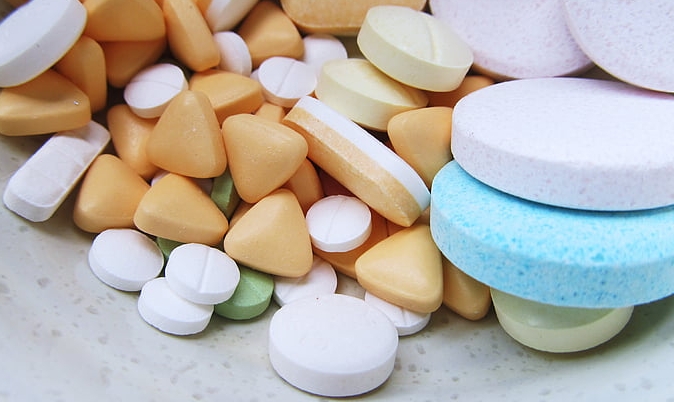From January 10 to 12, the 35th Pharmaceutical Economic Information Conference was held in Guangzhou International Biological Island, where academicians and other experts and scholars, government representatives and more than 400 pharmaceutical entrepreneurs from across the country gathered together. Since it was first held in 1989, the "National Pharmaceutical Economic Information Conference" aims to build a platform for information release and exchange, publicize and implement drug regulatory policies, release pharmaceutical economic information, and predict the trend of the pharmaceutical industry, which is known as the "vane of the development of China's pharmaceutical industry".
It is reported that the conference is composed of government and enterprise communication meetings, main forums and sub-forums. At the Top 30 government-enterprise communication meeting of biomedical enterprises held on the 10th, representatives of government departments and enterprises at all levels, such as development and reform, health care, medical insurance, and drug administration, exchanged and discussed the new opportunities of Guangzhou's biomedical industry under the drug review and approval, policy innovation, "Hong Kong and Macao drug and equipment" policy, and "1+N" policy system, releasing a strong gravitational wave of investment promotion. The conference officially opened on the 11th, the main forum set up "policy engine" and "industry engine" two major plates, and set parallel conferences from the five dimensions of "quality win global, treasure inheritance, academician convergence, channel integration, industry and commerce integration", which is highly in line with the theme of the conference "Restart growth engine - Integration and innovation, winning the future".
The trillion-scale biomedical industry is booming, with Guangzhou Development Zone leading the way
At the meeting, from the State Drug Administration Department of drug supervision and Administration, drug Registration Department, Policy and Regulations Department, drug evaluation center, the National Medical Insurance Bureau of pharmaceutical prices and bidding procurement Department and other government departments responsible person, Authoritative interpretation was made around the safe and high-quality development of drugs, innovative drug review and approval measures, drug regulation construction planning and progress, clinical value drug innovation, drug collection policy implementation, and China's pharmaceutical economy outlook.
As the host of this conference, the development of Guangzhou Development Zone and Huangpu District bio-pharmaceutical industry cluster received extensive attention during the conference. At the symposium held on the 10th, Gu Xiaobin, member of the Party Working Committee and deputy director of the Management Committee of Guangzhou Development Zone, introduced to the guests, pointing out that the current area is starting from four aspects of approval services, policy incentives and carrier support to vigorously strengthen the development efficiency of the biomedical industry.
"We are the first in the country to build a mechanism of biological medicine provinces and regions, the relevant units in the area can review, inspection, inspection, consulting and technical services at the 'door', and also set up a special Huangpu District New drug declaration service center." In addition, the introduction of a single project that meets the "biological 10" support standards in our district can be approved for 500 million yuan. By 2025, Whampoa will strive to gather more than 5,000 biomedical enterprises, add 5 to 10 first-class innovative drugs, and add 3 to 6 listed companies to accelerate its march toward a biomedical agglomeration area and the innovation highland of the global biological industry." Gu Xiaobin said.
According to the forecast report released by the Southern Institute of Pharmaceutical Economics of the State Medical Products Administration at the meeting, the operating income of the national pharmaceutical industry is expected to increase by about 5% in 2024. From the supply side, the innovation ecology of the biomedical industry in the new era has been continuously optimized, the degree of intensification has been improved, a single champion has emerged in the subdivided fields, and the unlimited potential of new quality productivity has been released.
Such an industrial situation can be seen from the current development of Guangzhou Development Zone and Huangpu District. At present, the district has gathered 443 biomedical high-tech enterprises, 92 new clinical trial approvals in 2022, and 93 new drug applications from January to October 2023, accounting for 95% of Guangzhou and 44% of Guangdong's new drug applications.
Guangzhou International Biological Island gathers resources to accelerate its progress towards world class
At the beginning of January 2024, the Executive meeting of the Guangzhou Municipal Government reviewed and passed the "Several Policy Measures for Promoting the High-quality Development of the Biomedical Industry in Guangzhou", which clearly proposed to build a "one nuclear and two poles" high-end biomedical industry spatial layout with Guangzhou International Biological Island as the core, and create a "one island and multiple parks" policy pilot gathering area with "International Biological Island" as the park brand. Take the lead in building Guangzhou International Bio-Island into a source of biomedical science and technology innovation and a core highland for industrial development.
At present, the bio-pharmaceutical industry in Guangzhou Development Zone and Huangpu District has basically formed a whole-domain layout and whole-chain development. Science and technology research and development is mainly in the biological island, to create a national biomedical policy innovation pilot zone; Focus on the transformation of achievements in the Science city, to promote the construction of an international center for the transformation of biomedical achievements; Production and manufacturing are concentrated in the Knowledge City to accelerate the construction of a world-class biomedical manufacturing center. It has formed a biomedical industry cluster covering six fields, such as gene testing, recombinant protein, cell therapy, stem cells, tissue engineering, and 3D bioprinting.
Among them, Guangzhou International Biological Island has become a national park that simultaneously lays out national strategic science and technology forces such as Guangzhou Laboratory and human cell lineage scientific device, and is also a national 5G autonomous driving application demonstration island and a national future industrial science and technology park construction pilot.
"Biological Island can be said to represent the forefront of the current development of China's biomedical industry, and enterprises can also enjoy the policy and financial support given by the Guangzhou Development Zone here, which has greatly eased the research and development pressure of pharmaceutical companies." Guangzhou Hanguang Pharmaceutical Co., Ltd. is an OTC pharmaceutical company in the field of vitamin products. The person in charge of the company said that it was because of the superior development environment and good business environment of the bio-pharmaceutical industry in Guangzhou Development Zone and Huangpu District that the company moved to the Bio-island.
















